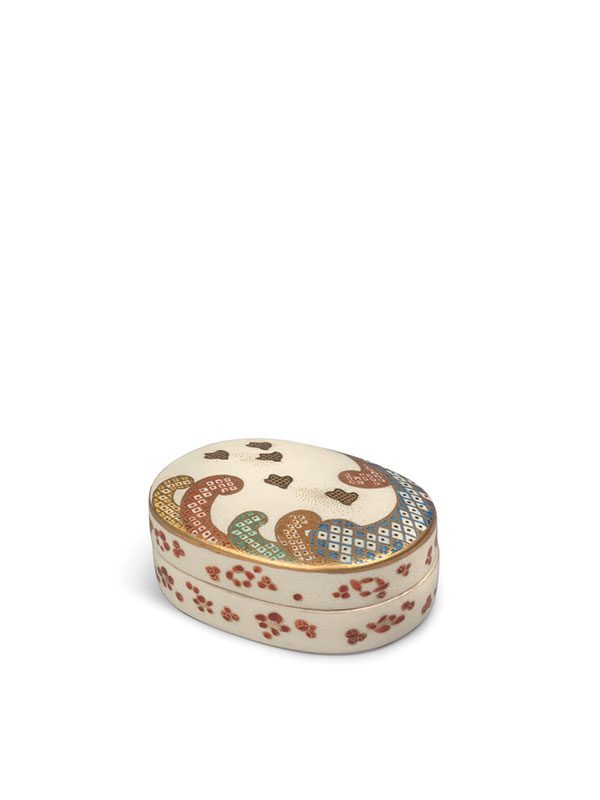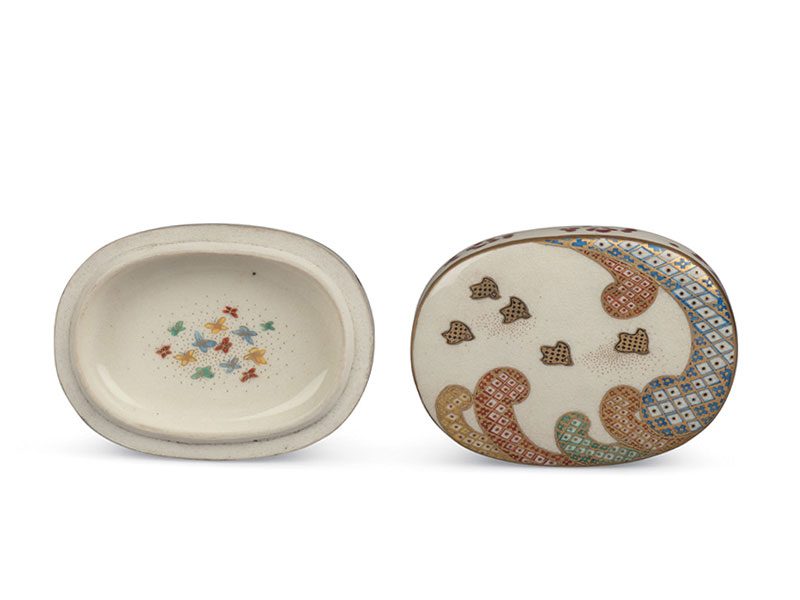Satsuma earthenware box
An earthenware box of oval shape, the slightly domed lid painted with five stylised plovers (chidori) flying into brocaded, crested waves that are arranged around the rim. The sides are decorated with plum flowerheads in red enamel and gilt. Further scattered flowers in coloured enamels are painted on the inside of the box, on the top and bottom. The slightly recessed base is marked in gilt with the maker’s mark Hozan and the two-character mark of the Shimazu Satsuma clan.
This charming box with its delicately depicted plovers can be qualified as Satsuma ware. Satsuma ware is a style of Japanese earthenware originally from the Satsuma region in what today is southern Kyushu. By adapting their gilded polychromatic overglaze enamel designs to appeal to the taste of Western consumers, manufacturers of Satsuma ware succeeded in making it one of the most recognized and profitable export products of the Meiji period. Most Satsuma ware is somewhat over-decorated, but this box shows a far more restrained, elegant style.
- Notes


